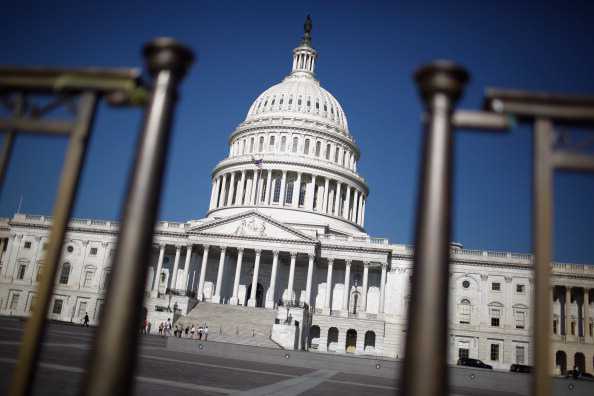DEAD HEADS: Headscarves, Turbans…Shrouds for the Living
It’s now all the chi-chi fashion rage! The prurient fashion designing male politicians of both sides are again trying to determine what Turkish women should wear on their heads. And where, and when, too. The secular left offers the Iranian model with a dash of hair showing. The so-called pious, ruling party, convicted by the Turkish constitutional court of being the center of the anti-secular movement in the nation, argues in the craven words of democracy and freedom. Whether
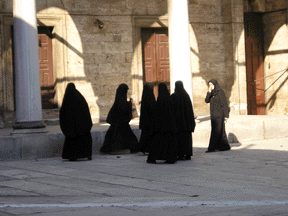
it’s abaya, chador, burqa, nigab, turban, hijab, it’s all part of a women’s democratic fashion choice. And the prime minister himself has proclaimed the covering of women as a “political symbol.” In fact, it’s a symbol of stupidity and backwardness. It’s a political dialogue, at the expense of the dignity of Turkish women, intended to put them and keep them in a “living” kefen (burial shroud). It is a lifelong headlock—social, political, intellectual, physiological, and psychological—a death grip until they meet their literal end in the grave.
“Be sure of it!” challenged the jealous Othello, for he must be certain of his wife’s infidelity. “Give me the ocular proof,” he demanded of the treacherous Iago, taking him by the throat. And in this manner Desdemona would be condemned by her own version of a headscarf, her handkerchief, the ocular proof of her infidelity. Except it was false, planted evidence. But she was a woman so she died anyway.
The headscarf issue that so besets and divides Turkey is also “ocular proof.” But of what? National piety, that’s what. It had allowed America to call Turkey a “moderate Islamic nation.” It satisfied the American need for symbolic gestures, like the upright purple fingers of Iraqi voters signified democratic progress. For without such signs how could America, George W. Bush, Barack Obama, and their fellow Americans be sure of Turkey’s democratic moderate Islamic piety? And if you’re wondering how a backward-thinking political party like the AKP came to be the ruling party of the country of Atatürk, it’s because of AKP’s complete collaboration with America’s disastrous Middle East policy. And sadly, while President Obama earlier indicated differently, he too de facto continues the nonsensical Bush administration’s policy of Turkish moderate Islam. And the ruling party, the AKP, loves all of it, particularly the headscarf part. The prime minister also encourages women to open themselves to the idea of having at least three children. Ah such loving political concern by the prime minister for the most delicate areas of femininity.
It should come as no surprise to even a casual reader of the Koran that the Turkish headscarf issue has nothing to do with Islam. It is a tradition that was made-in-America, not Mecca, and certainly not in Turkey. The genuine tradition of wearing a headscarf arose from women field workers in rural areas for protection from extreme weather conditions. In other words, the headscarf came about from a physical necessity that had nothing to do with religion. This has been appropriated, more correctly, stolen, by religious-mongering politicians and converted into a bogus religious duty. In fact, it is an imperative that arises from imperialism and enslavement.
The historian Eric Hobsbawn explains this phenomenon in his book, The Invention of Tradition. (1) One example is especially relevant to today’s Turkey. Do you think that the Scottish kilt and its fabric-coded clans were part of some long cultural tradition in Scotland? Wrong! It was invented by the ruling power, England, to divide tribes into definable groups, thus to better control them. In like manner was the political turban invented by America for Turkish consumption by gullible women at the hands of scheming male politicians. Turkish women, wise up! It’s always the same old story with you! Don’t allow yourselves to be led by ignoramuses, no matter what political party they pretend to represent!
Consider this. Without the headscarf Turkish women look, for the most part, much the same as any western women. Don’t bother what’s in the head of Turkish women. For Turkish politicians, it’s what’s on it that counts. In their eyes, women are merely objects, with particular prurient focus on their hair. The admonition for women to cover their heads is made by men not by the Koran.
The American woman presented as some sort of authority by the Turkish Daily News article entitled “American seeking a democratic Turkey” (Feb. 2, 2008) said that, for her, the headscarf symbolizes that “I am a Muslim woman.” Covering is “mandatory” and an “obligation,” she said. This is nonsense. She was either misreading or not reading the Koran. Indeed, she was manufacturing her own tradition. One may wear whatever they want on their heads, whether a baseball cap or a lampshade. And one may justify doing so or not. But the justification for Turkish women to wear headscarves resides not in the Koran, but in their blind, thoughtless subservience to political men. One may make up one’s own rules about anything but there is no such rule in the Koran. “There must be some wisdom to it,” she insisted, demonstrating blind faith and little else. How sad a limitation for this woman who professes to be a “seeker.”
The Koran, a precisely worded text, contains no language requiring women to cover their heads. None whatsoever! It renders specific procedures about many things. For washing: “hands as far as the elbow… feet to the ankles.” In the desert? No water? Use “clean sand” (5.5). For apostates who preach against God: “have their hands and feet cut off on alternate sides” (5:31). Regarding food: don’t eat “strangled animals” (5.3) and “kill no game while on pilgrimage” (5:95). Of course, it does admonish all people as “children of Adam” to cover their shameful parts, but this is mythological derivative material from the Bible and the fall of man (7:25). And for all its enormous specificity, it never mentions women’s hair. There is much information in this fact.
In reality, the Koran is protective of women. Women should “draw their veils close round them” so they will not be molested (33:57)—by men of course, the same kind of men who now seek to enslave Turkish women. They should “cover their bosoms,” not display “their adornments except such as normally revealed” and not “stamp their feet when walking” (24:30). But there is nothing therein about wearing a headscarf in order to be a “Muslim woman.” This is a manmade myth, a sham, that is also dangerously stigmatizing of those women who don’t cover. Are they any less Islamic? And why should women bear the full signifying burden anyway? The answer is simple. First, because of the Turkish government’s complicity with America’s political project in the Middle East. Second, because men, particularly pious political men, said so in order to keep women in a subservient role. What a bad, sick joke on women! What a bad, sick joke that women play on themselves!
Of course, women can wear anything they choose. But they should know why they do so. And if they choose to wear a headscarf, they do so, not for Allah or Jahweh or Jesus or Mary or Mohammed, and certainly not for the Koran. They do so for politicians. And that’s just stupid. They should take great care not to end up like Desdemona, torn apart by the jealous, deceitful hands of their own personal and political Othellos.
Cem Ryan, Istanbul
(1) Hobsbawm, Eric. The Invention of Tradition.Cambridge University Press, Cambridge, 1992. (2) Turkish Daily News. American seeking a democratic Turkey. 2 February 2008.

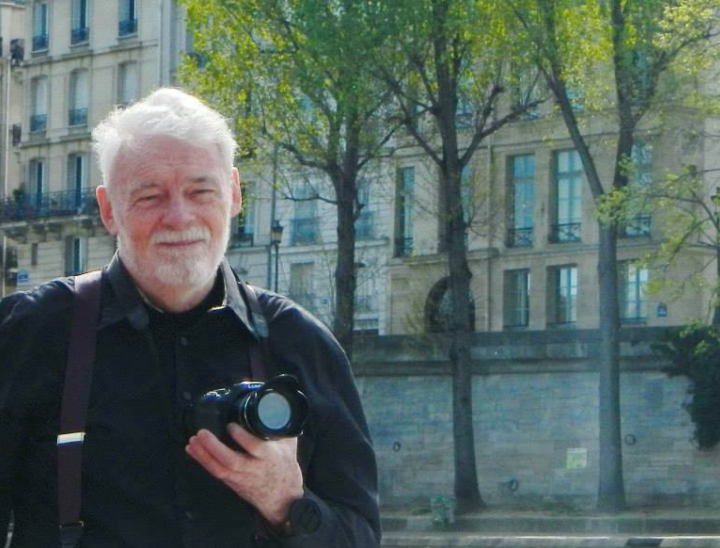

![Rescue Effort Reaches Miners 4 [1013chile03]](http://si.wsj.net/public/resources/images/OB-KK880_1013ch_A_20101012215627.jpg)
![Rescue Effort Reaches Miners 5 [SB10001424052748703673604575549940242265812]](http://s.wsj.net/public/resources/images/OB-KL030_1013ne_D_20101013095543.jpg)

![Rescue Effort Reaches Miners 7 [SB10001424052748703440004575548931107918958]](http://s.wsj.net/public/resources/images/OB-KK938_1013ch_D_20101013043038.jpg)




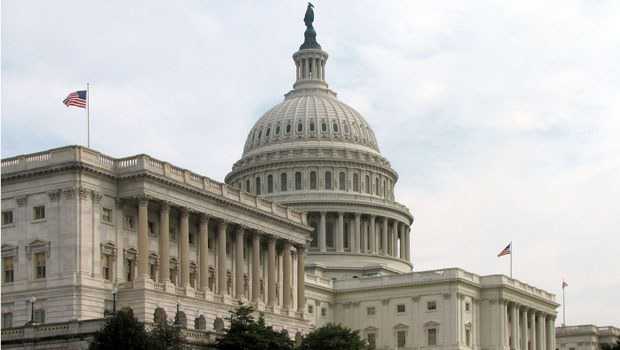
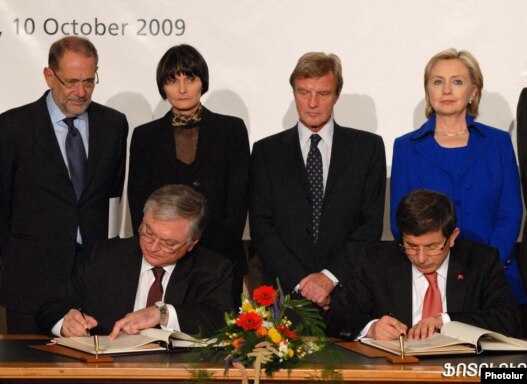
 Foreign Ministers Eduard Nalbandian of Armenia (L) and Ahmet Davutoglu of Turkey sign landmark agreements to normalize Turkish-Armenian relations in Zurich.
Foreign Ministers Eduard Nalbandian of Armenia (L) and Ahmet Davutoglu of Turkey sign landmark agreements to normalize Turkish-Armenian relations in Zurich.


